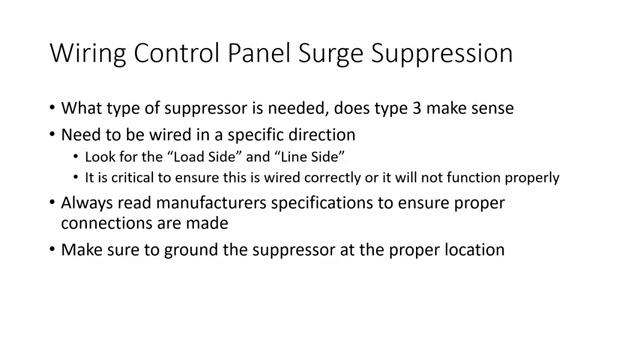How_to_Wire_Panel_Surge_Protection.pdf
Wiring Control Panel Surge Suppression
- What type of suppressor is needed, does type 3 make sense
- Need to be wired in a specific direction
- Look for the "Load Side" and "Line Side"
- It is critical to ensure this is wired correctly or it will not function properly
- Always read manufacturers specifications to ensure proper connections are made
- Make sure to ground the suppressor at the proper location
- Auxiliary contacts may be available to monitor status of the suppressor
Type 3 Surge Suppression
- "Point of Use" Scenarios
- Equipment is in close proximity to the suppressor itself
- Typically rated between 15–20 amps on 120VAC circuits
- This can vary depending on the devices being used
- In situations where high voltage is present, different surge suppressors should be used
Transcript:
[0m:4s] Hi I'm Josh Bloom, welcome to another video in the RSP Supply education series. If you find that these videos are helpful to you, it certainly helps us out if you could give us a big thumbs up and subscribe to our channel
[0m:16s] In today's video, we are going to be talking more about surge protection.
[0m:22s] More specifically, we are going to be talking about transient protection for an entire electrical control panel, in this case, a lower voltage panel.
[0m:33s] There are many different types of surge suppression devices that can be used in many different scenarios.
[0m:40s] In some of our other videos, we have talked about a few of those devices such as surge suppressing for antenna cables, and also for individual signal protection.
[0m:51s] If you have not already seen some of those other videos, we will link them in the description below.
[0m:57s] For the purpose of this video, we want to talk about how to wire up a type three surge protection device that is designed to protect an entire control panel or branch circuit as well as isolated equipment.
[1m:13s] Let's first talk about what it means when we say a type three surge protection device. Type three surge devices are intended to be used in a point of use scenario, or in situations where the equipment that is being protected is in very close proximity to the actual surge suppressor itself.
[1m:35s] Also typically type three devices are rated for between 15 and 20 amps on 120 volt circuit, but this can vary depending on a device that is being used.
[1m:46s] So in situations where your voltage is higher, a different type of suppressor will need to be used, but many of the principles that we will discuss in this video will still apply.
[1m:58s] In the example that we are going to be referring to today, the input power on the panel will be 120 volts AC with no more than 15 amps expected to be passing through the circuit at any given time.
[2m:13s] In order to provide protection to the sensitive hardware within the panel, it makes sense to use a surge suppressor. By using a surge suppressor at the entrance point of the panel, it allows us to protect everything downstream of that suppression device.
[2m:33s] For example, if you look at the surge suppressing device, we have in this particular panel everything downstream, including the power supply Ethernet switch and PLC are all going to be protected by this particular surge suppression device.
[2m:49s] So how do you properly connect this device?
[2m:53s] Like with any surge suppressor, there is a specific direction in which they need to be wired in. More specifically, there is a line side, or the side of the suppressor in which power is coming in from, and a load side, which is the side of the suppressor that is sending power to the various devices within the panel or circuit requiring protection.
[3m:16s] It is critical to make sure that you wire this device in the correct orientation or it will not function properly.
[3m:25s] As you can see on this particular panel, we have a line side which comes in at the top of the suppressor,
[3m:32s] and we have a load side which comes from the bottom. Everything downstream of that load side device will be protected.
[3m:39s] With the Suppressor that we are using today, it is clearly marked which side is intended to have power coming in,
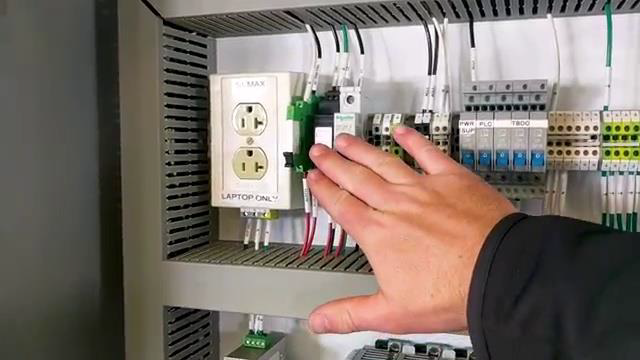
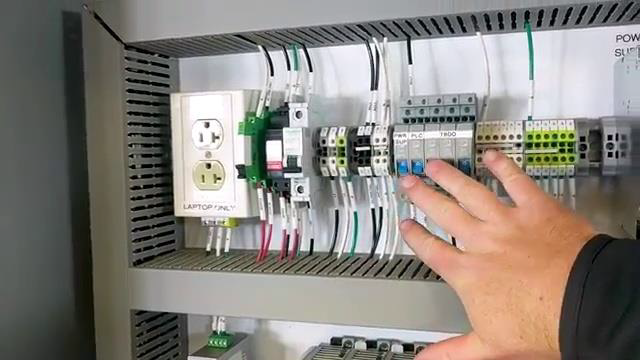
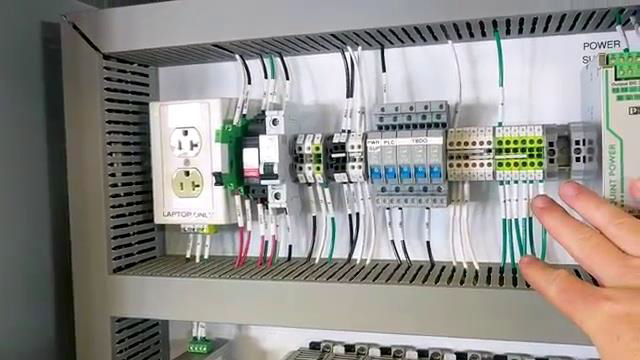
[3m:47s] or the line side, and which side power is going out or the load side.
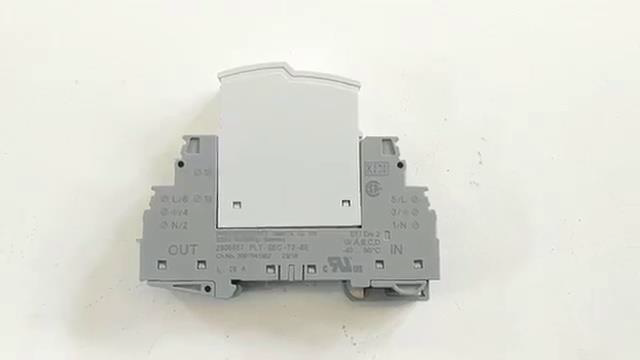
[3m:54s] It is also important to make sure that each conductor is landed in the correct location on the Suppressor. If the conductors in use are connected to the wrong terminals on the suppressor, it can be very dangerous and also result in many different issues, including damaging expensive equipment.
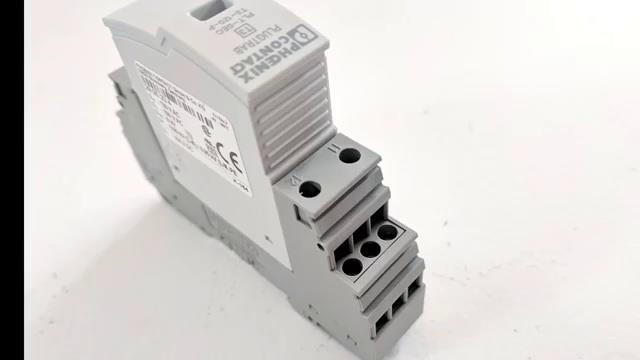
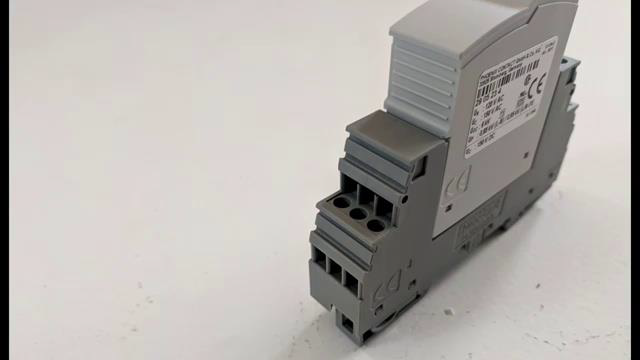
[4m:14s] It is always important to read the manufacturer specifications to ensure that you are making the proper connections and in the right orientation.
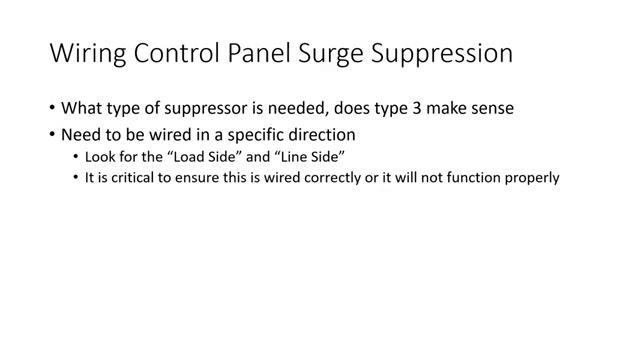
[4m:24s] This specific suppression device clearly marks where each conductor should be landed and in which side is the line side, and which side is the load side. As you can see very clearly states in, being line side,
[4m:41s] out
[4m:42s] out being load side. We also clearly have marked where each terminal should be landed, both line and load side.
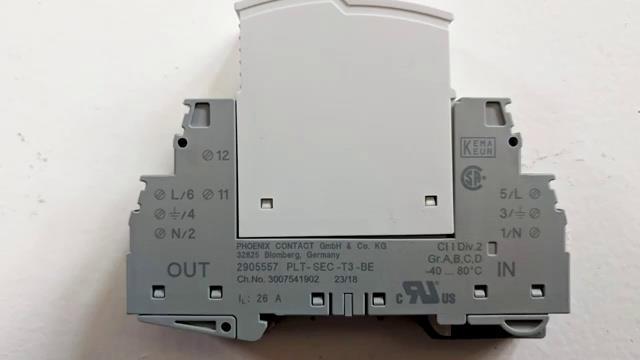
[4m:49s] We also have mark where it needs to be grounded.
[4m:53s] Also, this particular surge suppression device has an auxiliary contact which allows us to measure the state of the suppression device, so that if a surge event happens and it burns up, we can read that within a PLC input. Also, this particular device allows us to remove and install a new suppressor without removing the base element. When installed correctly this type of search oppression can provide very reliable protection for any equipment that you hope to protect. As mentioned before, always follow the manufacturers installation instructions and also make sure to follow your local electrical code. For a full line of surge suppression devices and thousands of other products, please go to our website.
For more information or other educational videos, go to RSPSupply.com, the Internet's top source for industrial hardware. Also, don't forget: like and subscribe.
